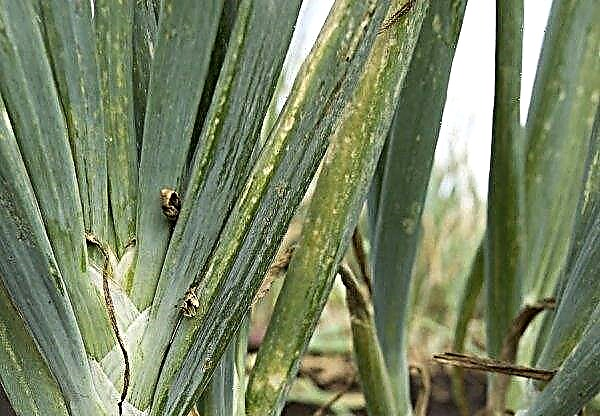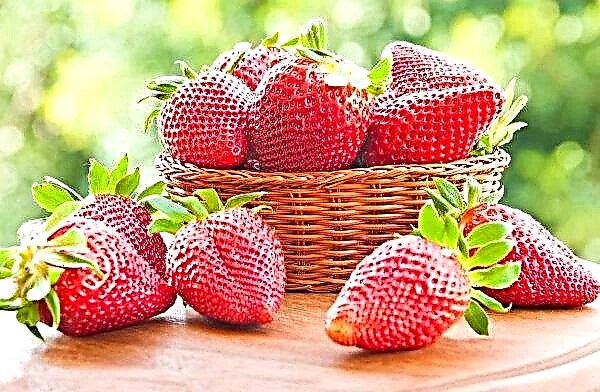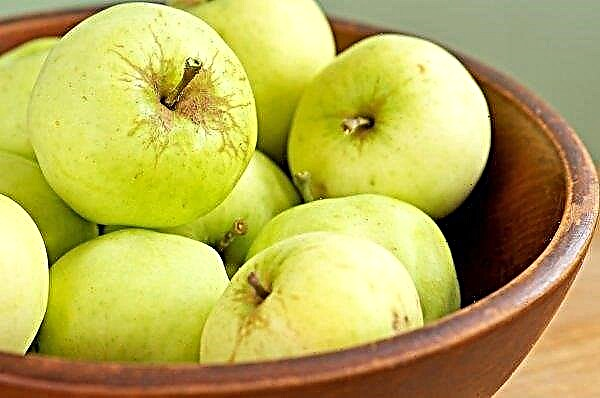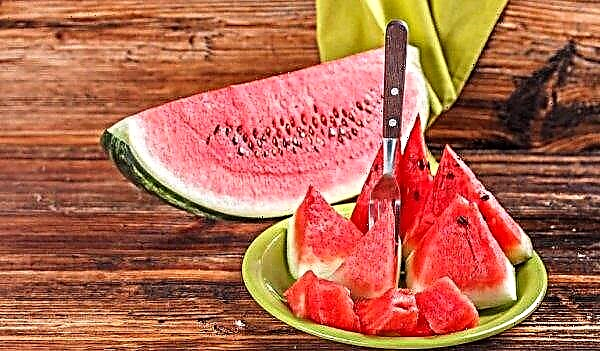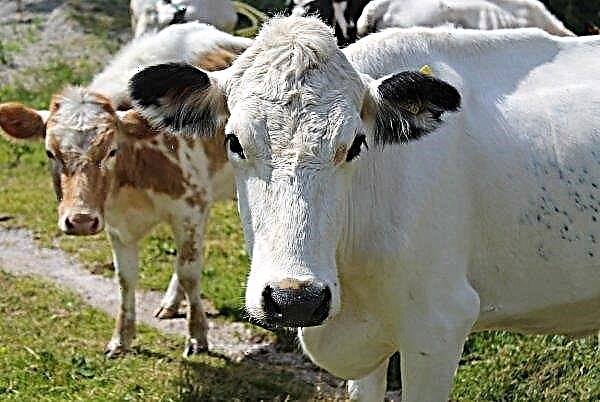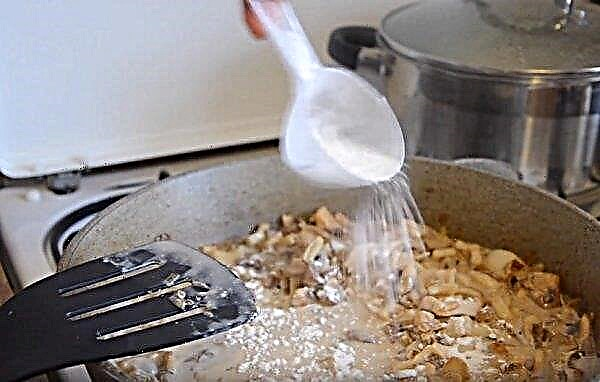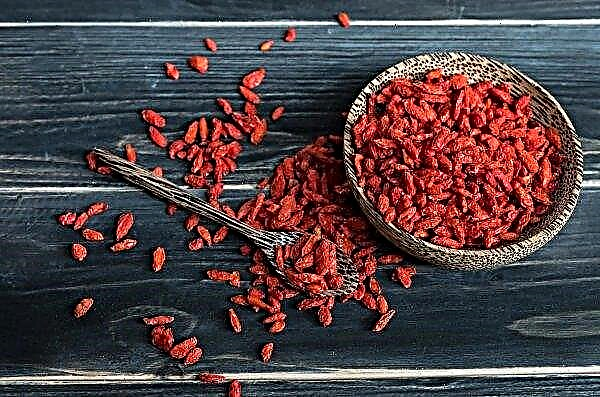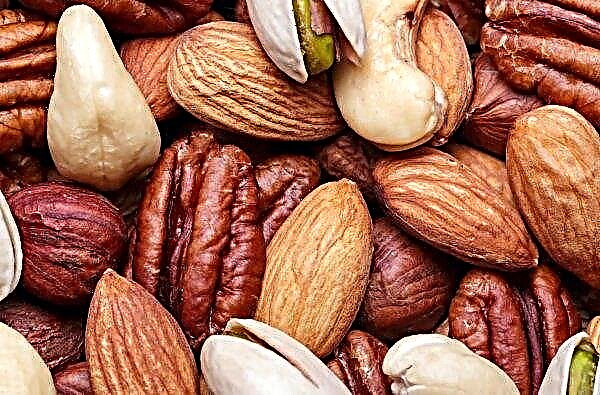Beetroot is the vegetable that no hostess can do without in the kitchen, because it is an integral component of many salads, soups, famous borsch and other everyday and gourmet dishes. But in order to get a tasty and juicy vegetable, you need to work hard and grow it, because the sugar root crop grown by itself is much tastier than the purchased one. The decision to grow beets immediately raises doubts: to sow the crop with seeds or to choose a seedling method, which will be discussed in more detail in the article.
Is it possible to plant beets seedlings
Often, gardeners do not attach much importance to the cultivation of beet root crops and do not complicate themselves by comparing seed and seedling technologies. Most often, the vegetable is sown with seeds. But those who want to get fresh root vegetables turn to the seedling method as soon as possible, which allows them to feast on dishes with vegetables 3-4 weeks earlier.
Important! Experienced vegetable growers recommend resorting to the seedling method of planting beets in the case of early varieties of root crops, which are distinguished by the presence of more carotene, vitamins (B, C) and trace elements (contains a large amount of phosphorus, iron, magnesium, calcium) in the composition.
Young beet seedlings quite easily transfers the transplant to the open ground. The germination of seeds sown in open ground directly depends on the temperature of the air and soil. So, if the temperature rises above +20 ºС, then the first sprouts will appear after 3-4 days. With temperature jumps, the germination period can be delayed up to 3-4 weeks. Before sowing the seeds, it is recommended to germinate them first - leave them for a while in moist gauze, having previously stood in a solution of potassium permanganate for disinfection purposes. Keep planting material in a humid environment until the first sprouts hatch.
Before sowing the seeds, it is recommended to germinate them first - leave them for a while in moist gauze, having previously stood in a solution of potassium permanganate for disinfection purposes. Keep planting material in a humid environment until the first sprouts hatch.
- Such a measure has its advantages:
- fast germination of germinated seeds;
- increased immunity of such seedlings to diseases, environmental conditions;
- seedlings grown from sprouted planting material adapt more quickly to transplanting into open ground.
Important! Due to the fact that beets are a heat-loving culture and are afraid of even small frosts, it is more effective to resort to the seedling method of planting it so that the planting does not die during the cold snap.
How and when to plant beets on seedlings
Although planting sugar root crops with seedlings is not a tricky business, it is still worth familiarizing yourself with some of the features.
Basic rules for sowing
The list of basic rules for sowing beet seedlings is as follows:
- The main purpose of planting is to get a good harvest. To achieve it, the first thing you need to take care of is the choice of high-quality seed material. It is easier to purchase seeds in specialized agronomic shops, but you can also collect them yourself. So, the first year, for example, you grow several varieties per sample. Having chosen the most delicious and suitable variety, leave a few plants for the next year, it is from them that you will collect seeds.
- When choosing varieties of culture, it is worth paying attention to such a criterion as resistance to flowering.
- You should take care of the conditions where the seedlings will grow: the place should be well lit and warm. Before the first shoots appear, experienced gardeners advise maintaining the temperature in the room +18 ... + 20 ºС, with the appearance of the first sprouts, the temperature regime should be reduced to +14 ... + 16 ºС. Lowering the temperature below the specified limits can lead to the shooting of future plants, that is, instead of a good crop of root crops, you will get a plentiful crop of their seeds. Seedlings need to receive a sufficient amount of light: 12-14 hours a day, it should be in a lighted room. The soil should be selected high-quality and fertile. It is worth taking care of the regular ventilation of the place where the containers with seedlings will be located.
- Harvesting seeds for planting can only be carried out from healthy plants.to further receive healthy seedlings.
- Before sowing, you should calibrate the seed, that is, to separate healthy and high-quality seeds from bad ones. It is important that the fruits are not empty. A filled fruit is very easy to distinguish from an empty one. The best quality way to check the fullness of seeds is to dip them in saline (3 or 5%) and mix. Those fruits that have surfaced are unsuitable for sowing.
- Sown material should provide regular watering.
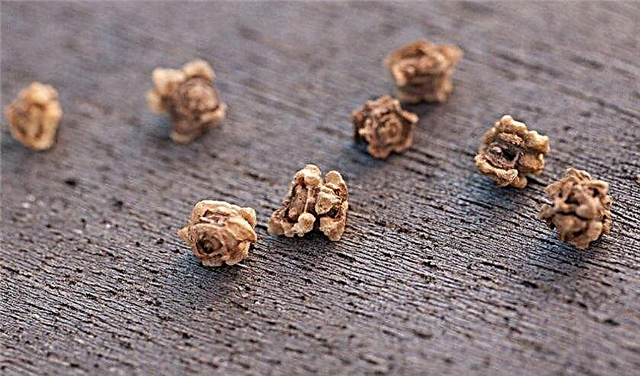
Landing time
Sowing beets for seedlings is necessary 30–40 days before they are transplanted to a permanent place in the open ground. The optimal landing dates are late March - early April.
Did you know? Beets are grown on all continents. The exception is Antarctica.
Capacity selection
Beetroot seeds can be sown both in special wooden boxes, plastic containers, and in separate cups. The advantage of the second type of tank is that the seedlings do not have to dive after a while, they can be grown in glasses until the moment when they are transplanted into the open ground.
Plus, relatively large wooden boxes and containers - in the convenience of transportation. You can also use special cassettes for landing.
Soil preparation
It is easiest to buy a soil mixture for sowing beets in a store. But in order to save money, you can prepare it yourself, especially if you have all the necessary components at hand.
So, in the composition of the substrate for beet crops, you need to include:
- peat;
- humus or manure;
- turf land;
- sand.
The ideal dosage ratio of the listed components is 2: 1: 1: 0.5. You can also add some compost. The culture reacts very painfully to an increase in soil acidity and excessive alkalinity.
Important! It is recommended to carry out disinfection procedures with the prepared substrate. To do this, use a solution of "Fitosporin", "Vitaros" or "Maxim". These drugs are prophylactic drugs against «black legs» and fomosa.
To avoid problems, it is recommended to add wood ash to the substrate, 0.5 cups for every 5 liters of soil mix.
Seed treatment
Effectively harden seed material. This is done by soaking it until it swells or the first sprouts appear, and then wrap it in gauze or a similar cloth and place in the refrigerator for 1-2 days.
To prevent future plants from catching viral and fungal diseases, it is recommended to warm them up: place water in warm 50-60 degrees for 2-3 hours. Hot water destroys cells of fungal and viral spores, and they exfoliate from seed cells.
Landing technology
Planting work with beetroot seeds involves several stages.
Preparation of special grooves in the ground
Shallow grooves (about 1-2 cm) are made in the soil into which planting material will be sown. At the same time, it is recommended to compact the bottom of the grooves, which prevents the seeds from deepening into the ground, which slows down germination. A distance of 5 cm should be observed between the grooves.
Watering the substrate
Before sowing beets, the substrate must be well watered.
Folding out planting material
Seeds should be spread out in moistened ground, keeping a distance of 3 cm between each seed. For accurate and accurate execution of the procedure, use ordinary tweezers.
Covering the seeds with soil
After the seeds have taken their seats, they need to be covered with 1–1.5 cm with a layer of substrate and watered.
Did you know? In the Middle Ages, people valued not so much the root vegetables of a vegetable, but rather its leaves, which were eaten. Before eating, they were pre-soaked in wine and sprinkled with pepper. In addition to eating, beets paid tribute to the emperor.
Shelter containers with seeds polyethylene
In order to create a greenhouse effect, the container with seeded beets is covered with a film of polyethylene and placed in a favorable environment - a greenhouse or other warm room.
About 1 seed will need about 15 seeds per 1 m².
Features of seedling care
Since the appearance of the sprouts and the formation of the first leaves in them, you should slightly change and expand the tactics of seedling care.
Dive
The dive stage includes the preparation of a greenhouse or greenhouse, where beds will be prepared for the first transplant of seedlings. Picking is a must when growing beets seedlings. The fact is that about 5-6 seedlings sprout from one beet seed.
When sowing seeds, excess seedlings are simply thrown away, because you need to thin out the planting. In the case of the seedling method, the sprouted sprouts simply dive into a separate container, which allows you to save seed material and not to throw out the seedlings.
For diving, you need to prepare the same substrate as for sowing, with the addition of nitroammophos in the proportions of 1 tbsp. l means for 5 liters of soil mixture.
The width of the greenhouse site for diving should be 1 m, and the thickness of the substrate - 40 cm. The soil should be fertilized with fertilizing of plant origin (leaves and branches of plants, last year's grass).
72 hours before the dive, water the vegetable fertilizers by water using hot water, then they are sprinkled with a 20 cm layer of soil and covered with a film. After three days, the active process of decomposition of organic fertilizers will begin, which will serve as a kind of natural heating for seedlings.
Important! Some gardeners prefer to avoid the picking procedure, for fear of harming the seedlings. However, picking can and should be carried out, because after the procedure the beets will grow much better, and it transfers these manipulations absolutely painlessly.
For a pick, the strongest and strongest specimens are suitable. The distance between the seedlings during the dive should be approximately 5-7 cm.
Top dressing
Beetroot prefers organic fertilizers and does not welcome the excess of mineral, which in the future can provoke cracking of root crops. Also, a void may form inside the fetus.
Immediately after a pick, it is recommended to feed the seedlings with organics. It is advisable to use bird droppings diluted with water (1/12), mullein with water (1/8). These products are rich in nitrogen, which seedlings need. Calculation of fertilizers - 12 liters per 10 m².
As fertilizers, you can use:
- peatwhich is capable of heating plants;
- silt - source of phosphorus;
- compost - in addition to its rich composition (potash, phosphorus, calcium, nitrogen components), it is accompanied by water and air permeability of the soil mixture.
After the seedlings are planted in open ground and grows to the stage of closure of the tops, you will need to make potash fertilizers in the form of wood ash - 1 tbsp. / 1.5 m². Immediately after top dressing, the culture needs to be watered.
During the period of active formation and growth of root crops, plants need fertilizers with copper, molybdenum, and potassium. Sources of these trace elements is lime, with the use of which a solution is prepared in the proportions of 200 g of lime / bucket of water.
Important! In order to prevent the appearance of whitefly moths and summer flies, you can spray beetroot seedlings with saline, for the preparation of which you will need non-iodized salt (60 g) and water (10 l). Such a tool also nourishes root crops with sodium.
Foliage is sprayed with such fertilizer. The foliar method of introducing nutrients contributes to their even distribution to each plant.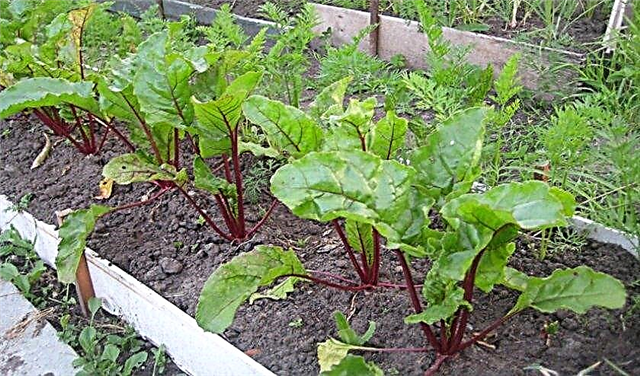
Watering
In greenhouse conditions, beet seedlings must be watered every day. The substrate should not be allowed to dry out by more than 4 cm. However, it is necessary not to overdo it with moisture, because waterlogging of the soil provokes the appearance of scab and may even lead to the death of the crop in the future.
It is best to use rainwater for irrigation. You need to carry out the procedure in the evening. On 1 m², it is recommended to use 2-3 buckets of water, the temperature should be room temperature. It is advisable to resort to foliar irrigation, since this method refreshes not only the roots, but also the leaves, and washes away dust accumulations from them.
In open ground, watering should be “coordinated” with weather conditions: in rainy weather, beets should not be watered. The total number of irrigations per season should not exceed 3-4 times, unless, of course, a long period of drought occurs during the growing season. In the last month of root crop cultivation, before harvesting, watering should be completely canceled.
Possible growing difficulties
Errors in the growing process can lead to a change in the color of the tops of seedlings, its pulling up, shooting, diseases, and even the death of the root crop. Undesirable processes may appear due to the following reasons:
Undesirable processes may appear due to the following reasons:
- Sowing substandard seed material. The future harvest depends on the quality and variety of seeds used. You cannot sow purchased seeds that have been stitched or stored under the wrong conditions.
- Incorrect soil for sowing. The substrate directly affects the growth and development of seedlings.
- Violation of planting patterns, or rather - thickened crops. This leads to a slowdown in seedling growth, its fragility, weakness and oppression.
- Use of sick planting material. Even one sick seed can become a hotbed of infection for all seedlings, which is why seeds should be disinfected.
- Violation of the standards of landing depth. Excessive deepening may cause seeds to not sprout at all.
- Wrong watering. Watering should be moderate: you can neither dry nor waterlog seedlings.
- Non-compliance with the conditions for growing seedlings: with insufficient lighting, violation of temperature conditions, improper wetting, seedlings can wither and die.
Did you know? Heat treatment does not reduce the beneficial properties of the vegetable.
Planting seedlings in the ground
It is necessary to start this stage slowly: it is better to let the seedlings stay longer in the greenhouse than to fall into cold soil or under the influence of low temperatures and frosts. Cold growing conditions can be fraught with both shooting and picking small hard-stone fruits instead of the desired crop.
It is better to transplant in mid-May. It is important that the soil at this time is already warmed to a depth of 10 cm.
Only those seedlings that already have 4 real leaves can be moved to the open ground. Also, seedlings must not be allowed to overgrow: if the roots of seedlings already rest against the bottom of the container, then the future fruits may acquire an irregular shape.
Planting beet seedlings is necessary in a well-lit area of the garden. The best type of soil is loose and fertile. Beets like medium loamy soils, as well as peat bogs.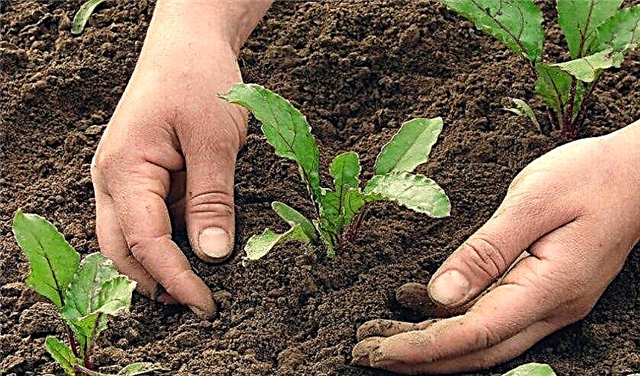 Before transplanting, organic fertilizers should be introduced into the soil on the site: a complex of humus, manure, well-fermented compost (3 kg / 1 m²). It will also be useful to apply about 30–40 g of nitrogen, potash and phosphorus fertilizers per 1 m². Dig the soil and loosen it.
Before transplanting, organic fertilizers should be introduced into the soil on the site: a complex of humus, manure, well-fermented compost (3 kg / 1 m²). It will also be useful to apply about 30–40 g of nitrogen, potash and phosphorus fertilizers per 1 m². Dig the soil and loosen it.
Important! It is recommended to carry out transplantation in cloudy damp weather.
Beets will feel good on the site, which last year was planted with potatoes, onions, eggplant, cucumbers, tomatoes, peas.
The transplant technology itself consists in preparing the holes. The depth of the hole will depend on the length of the root, it is important that it does not bend. A distance of 4-5 cm must be observed between each seedling, and 25 cm between rows. This distance is optimal for root crops to grow and develop well.
Immediately before transplanting, seedlings should be placed in a clay solution and the central root shortened by a third. After landing, be sure to pour the seedlings with a solution of potassium humate.
Due to the fact that seedlings grown in greenhouse conditions are not used to direct sunlight, it must be covered with non-woven material. Shelter is removed only at the beginning of July, then they mulch the soil. After the plant is accepted, it is necessary to thin out the planting so that the distance between root crops is 9–10 cm.
As you can see, having studied all the mores and features of beets, you can calmly and without unnecessary difficulties grow a vegetable in your own garden and collect the desired crop. The main thing is not to overdo it and observe the measure in everything.

